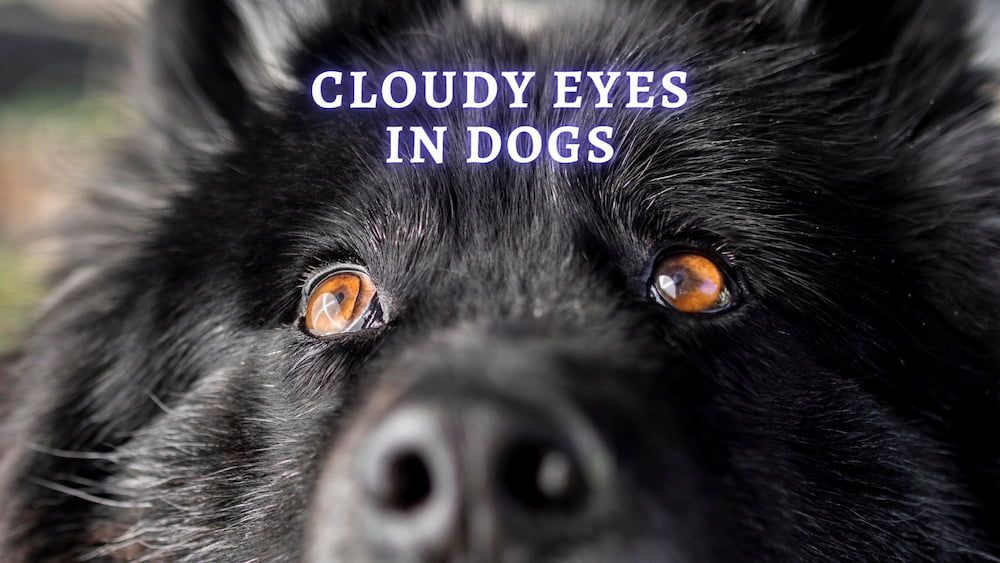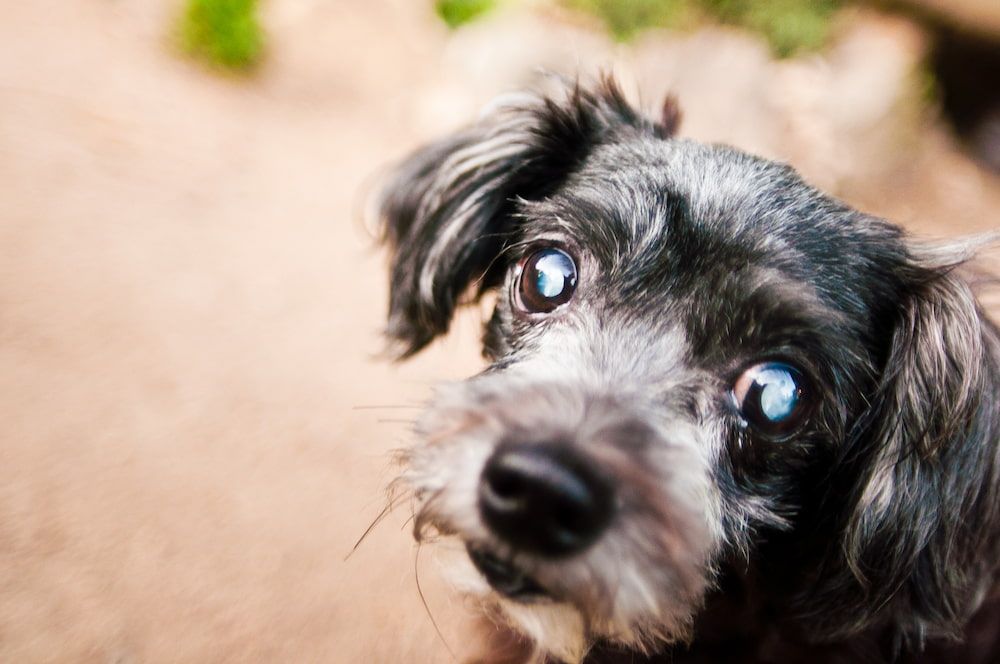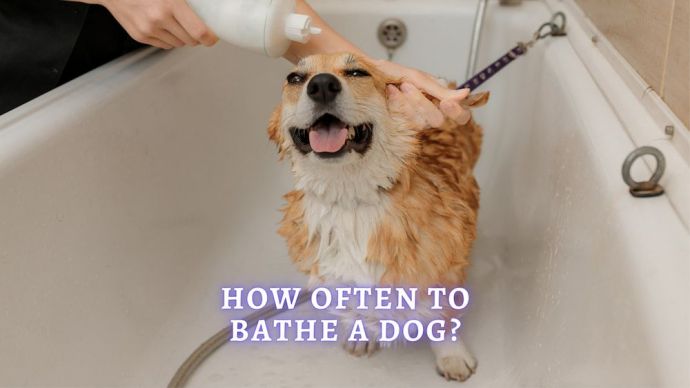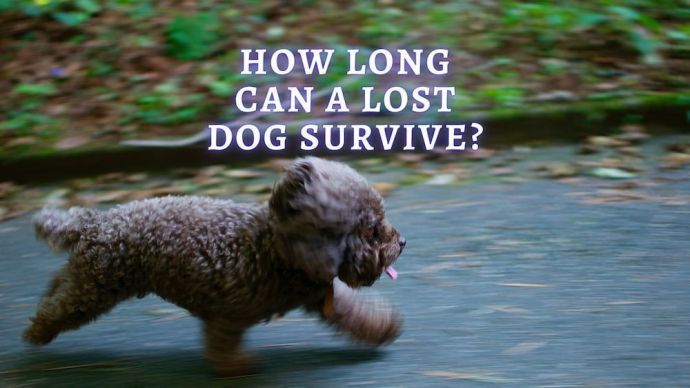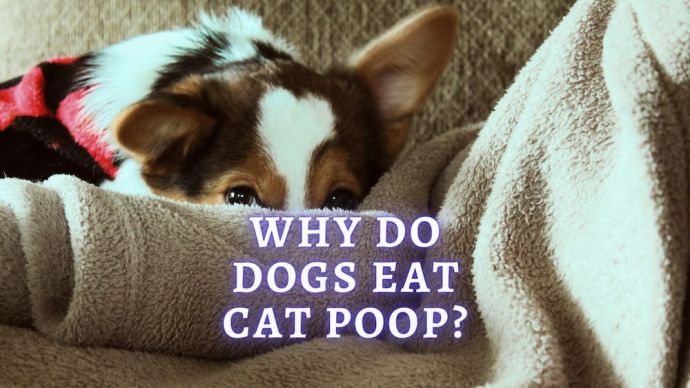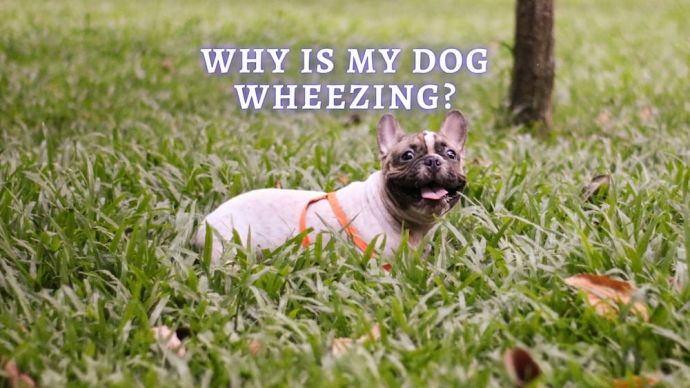Cloudy Eyes in Dogs (Vet-Approved Advice)
Written by:
Author: Scott Jeffrey
Scott is a professional blogger with 12+ years of experience in writing, and holds an MA in anthropology. He has two cats as housemates. Also, Scott is passionate to research on pet-related topics such as dog training, puppy feeding, and cat health.
View all 63 articlesLearn about our editorial process and veterinary review board.
Reviewed by:
Veterinary review
by Dr. Sara Ochoa
Dr. Sara Redding Ochoa is a veterinarian with many years of experience and higher education. During her time in veterinary school she was able to learn form some of the most well-known veterinarians from all over the world. Sara lives happily with her husband Greg and her babies Ruby the schnoodle, and Bam-Bam her bunny. Dr. Sara Redding Ochoa has a passion and love for animals that makes her a wonderful asset to our team.
View all 13 articlesLearn about our veterinary review board
Viewed: 46
Updated on: 05/11/2023
As a dog owner, it’s easy to tell when your furry companion isn’t feeling their best. They may seem less lively or less interested in their favorite activities. But what happens when you notice a change in their eyes? Cloudy eyes in dogs can cause concern and might indicate serious health issues.
Unlike humans, dogs can’t tell us exactly what’s wrong when feeling under the weather. This makes it our responsibility as pet owners to be aware of any strange changes in their behavior or appearance, including their eyes. If your dog’s eyes appear cloudy, you must take them to the vet as soon as you can schedule a check-up.
While it may seem sudden, cloudy eyes in dogs can develop over time and be subtle at first. Catching this change early – before it progresses into a tough white spot on the eye – is crucial in maintaining your dog’s sight and overall health. In this article, we’ll explore what causes cloudy eyes in dogs, what to look for, and how to take care of your furry friend’s eyes at home to prevent potential problems.
Other Eye Issues You May Notice
There are several eye conditions that dogs might experience which can lead to cloudy eyes. Some of the common eye conditions are discussed below.
1. Dry Eye
Otherwise known as keratoconjunctivitis sicca (KCS), dry eye can cause severe problems for a dog’s ocular health. It is a situation where a dog’s eyes fail to produce enough tears to lubricate the area, increasing the chances of corneal ulceration and vision issues. Some other common symptoms of dry eye include swelling, redness, milky discharge, and excessive blinking. The positive news about treating cloudy eyes is that it can be effectively managed using a tear-inducing medication, which could be a lifelong process.
2. Canine Cataracts
Cataracts can cause a dog’s eye lens to thicken, leading to opacity in the eyes and decreasing the amount of light that can pass through the retina. It can happen for several reasons, including age, diabetes, genetics, and eye trauma. Some breeds can be more susceptible to developing cataracts than others, including the American Cocker Spaniel, Poodle, Golden Retriever, and Siberian Husky. If you notice a milky film forming over your dog’s eye, take them to the vet to determine whether cataracts cause it.
3. Glaucoma
Glaucoma occurs when intraocular pressure goes up, which can cause damage to the optic nerve and lead to blindness. It’s a severe condition that requires immediate medical attention. Symptoms of glaucoma in dogs include redness of the eyes, cloudiness, pain, dilation of the pupils, and loss of vision. Certain breeds, including the Basset Hound, Cocker Spaniel, and Chow Chow, are more prone to developing glaucoma. A regular eye check-up can help catch the early symptoms of glaucoma and prevent it from progressing into a more severe stage.
4. Corneal Ulcer
Corneal ulcers are a common cause of corneal edema in dogs and can occur due to various factors such as scratching or injuring the eye or getting something irritating. Initially, the dog’s cornea may still appear clear if the ulcer is very superficial or may show a small cloudy spot of corneal edema. The symptoms of a corneal ulcer in can be very tricky to detect, and owners may not know until their dog displays signs such as pawing or rubbing at the eye, visible red blood vessels on the cornea, squinting, or excessive tearing. Deeper ulcers can cause observable defects, holes, or widespread edema in the cornea and may cause severe symptoms. Without prompt treatment, corneal ulcers – intense ones – can lead to permanent damage and blindness. If you suspect your dog is experiencing an eye ulcer, scheduling a vet appointment as soon as possible is essential.
5. Corneal Dystrophy
Corneal dystrophy in dogs is a heritable condition that can cause corneal edema due to inherited corneal abnormalities. There are three types of corneal dystrophy, affecting the different layers of the cornea, which can cause discomfort and lead to an increased risk of developing corneal ulcers. While some dogs with corneal dystrophy may show no apparent symptoms or other symptoms other than cloudy corneas, others may experience discomfort. Although there is no definitive cure for this condition, some veterinary ophthalmologists may recommend topical saline eye drops to relieve the edema or consider Descemet’s Stripping Endothelial Keratoplasty (DSEK) for corneal endothelial dystrophy. To rule out an active ulcer, your vet may recommend fluorescein testing during an eye exam.
6. Nuclear Sclerosis
Nuclear sclerosis in dogs is a condition that affects dogs between six to eight years of age and appears as a cloudy and blue lens when viewed from the side. This condition is painless, doesn’t generally affect a dog’s vision, and is a normal part of the eye’s aging process. Researchers believe nuclear sclerosis is caused by the compression of old fibers that make up the lens, with new fibers developing gradually. The cloudiness starts in the center of the lens and can eventually spread to the outer parts. While nuclear sclerosis in dogs doesn’t require any treatment, regular check-ups with a veterinarian can ensure that nuclear sclerosis is not affecting your pup’s eyes.
7. Uveitis
Uveitis in dogs refers to the inflammation of the uvea, a group of structures in the middle of the eye that includes the iris, ciliary body, and choroid. The sudden appearance of a cloudy eye in dogs can be a sign of uveitis. While corneal ulcerations and trauma are external causes of uveitis, internal infections from bacteria, viruses, fungi, or parasites are the most common causes. Uveitis can also be caused by other conditions such as elevated blood pressure, lens luxation, retinal detachment, cancer, congenital disorders, autoimmune diseases, or endocrine disorders. A vet will examine the dog’s eye and recommend the appropriate treatment depending on the underlying cause of uveitis; a thorough eye exam will check on the dog’s cloudy eyes.
Breeds that commonly experience cloudy eyes
Certain breeds are more prone to hereditary cataracts than others, and these cataracts can occur either during puppyhood or with age based on the type of inherited cataracts. This usually affects both eyes. The breeds most commonly affected are the Australian Shepherd, Bichon Frise, Boston Terrier, French Bulldog, American Staffordshire Terrier, Havanese, Silky Terrier, Miniature Schnauzer, Poodle, Cocker Spaniel, Labrador Retriever, Siberian Husky, West Highland White Terrier. Cataracts can cause a loss of vision and may not cause any additional issues in some cases. Dogs can develop cataracts naturally, especially senior dogs, but if you have a middle-aged dog, seeing a vet early can help detect why age-related cataracts may have appeared early. Cataracts are primarily harmless in your dog’s lens; however, they can also lead to more severe problems, such as glaucoma, so a veterinarian must promptly diagnose your pet.
RELATED: Dog is Getting Old
What Should I Do About Cloudy Eyes in Dogs?
Cloudy eyes in dogs can result from various underlying conditions requiring prompt medical attention. While some are harmless and may not need treatment, others, such as deep corneal ulcers and glaucoma, can quickly worsen, leading to vision loss. Therefore, the first step in dealing with cloudy eyes in dogs is to schedule an appointment with your veterinarian. Since eye problems can worsen rapidly, it is essential to seek prompt veterinary assistance, especially if your dog’s eyes are painful, cloudy, or red.
Although it is best to avoid treating eye problems at home, there are some safe and simple remedies that you can use to help your dog’s eyes feel more comfortable. It is essential to avoid using leftover eye ointments or oral medications from other pets or previous eye problems, as this can lead to further complications and discomfort. Instead, stick to safe eye medications such as eye lubricants or irrigation solutions designed for dogs to clean cloudy eyes with tear production after an injury or if a lot of discharge is visible.
While eye lubricants can soothe dry eyes, ensure they do not have added ingredients such as “red-eye reducers,” as these may not be safe for your dog. These will lead to tear production by stimulating the tear glands, but they may not be effective for some conditions that make dogs eyes cloudy. In case of doubt, consult with your veterinarian before administering any medication. If you are concerned that your dog is rubbing their eyes or has a deep ulcer, using an Elizabethan collar can help prevent further injury.
In conclusion, if your dog’s eyes are cloudy, call your vet or email them immediately. Prompt veterinary assistance is essential to determine the underlying cause of the cloudy eyes through diagnosing cloudy eyes, providing appropriate treatment, and, in some cases, preventing potential vision loss. While some “do’s” and “don’ts” of home treatment may help relieve your dog’s discomfort, any medication administration should always be done under the guidance and advice of a veterinary professional.
It’s essential not to be deceived by products claiming to cure cloudy dog eyes completely. Over-the-counter supplements or eye drops that claim to make your dog’s eyes brighter and healthier may exist, but their bold promises should be taken cautiously. The over-the-counter drugs don’t work on most pups, and while they can reduce the cloudy appearance, they are not a treatment that will work as a veterinary ophthalmologist would prescribe. Currently, no supplements are available to fix cloudy eyes in dogs genuinely. While some products like Ocu-GLO contain omega-3 and antioxidant vitamins, which have anti-inflammatory properties and promote overall eye health, treating cloudy eyes depends on the underlying disorder. Thus, it is best to consult your veterinarian to determine the best treatment plan for your furry companion.
RELATED: Dog Losing Hair Around Eyes
When to take a dog with cloudy eyes to the vet?
Various conditions can cause cloudy eyes in dogs. However, other factors may also contribute to this issue. If you notice your dog’s eyes are cloudy, it is crucial to seek immediate medical attention to avoid permanent damage and vision loss. Some eye conditions can cause severe pain to your furry companion, and seeking veterinary help to treat cloudy eyes ASAP can provide necessary relief. By consulting with your veterinarian, you can develop a plan to help your dog with cloudy eyes feel better and, hopefully, restore its vision.
People also ask:
What does it mean when a dog’s eyes are cloudy?
Cloudy eyes in dogs are a condition where the eyes may appear hazy, grayish, or opaque. This may affect one or both eyes and can result from several underlying diseases or conditions. Some of these conditions include glaucoma, cataracts, uveitis, corneal dystrophy, and nuclear sclerosis. If you notice that your dog’s eyes are cloudy, it is crucial to consult with a qualified vet to determine the underlying cause and appropriate treatment plan. Prompt veterinary attention can prevent further complications and vision loss in your furry companion.
How do I get rid of my dog’s cloudy eyes?
Treatment for cloudy eyes in dogs depends on the underlying cause. Taking your dog to the vet for a proper diagnosis and treatment plan is vital. Your vet may prescribe medicines such as eye drops, antibiotics, or anti-inflammatory medication depending on the cause of the cloudy eyes. However, not all causes require treatment; sometimes, it’s best to leave the eye alone. It is essential to avoid self-medicating or using any over-the-counter medicines without first consulting with your vet, as some products can worsen the condition. Remember to schedule regular check-ups with the same vet to ensure your dog’s overall eye health and detect potential issues early on.
Can a dog recover from a cloudy eye?
Regular check-ups with a local veterinarian are crucial to catch any potential eye problems in older dogs early on, as some conditions may be treatable if seen in time. Treatment options depend on the underlying cause of the cloudy eyes, and it is essential to seek prompt veterinary attention and appropriate treatment. For instance, cataracts may be treatable with surgery, while end-stage glaucoma or irreversible damage to the cornea may lead to an inability to recover. By following your vet’s guidance and keeping your dog’s eye health in check, you can provide the best care for your pet and help maintain their quality of life. You could reverse the signs of cloudy eye or even remove it if it is a specific condition and caught early.
Why is my dog’s eye scratched and cloudy?
A scratched and cloudy eye in dogs can result from various issues such as dry eye, cataracts, or corneal ulcers. Corneal ulcers, in particular, can be caused by scratches or foreign materials on the cornea and, if left untreated, can result in severe damage and vision loss. It is crucial to consult with a veterinarian immediately if you notice that your dog’s eyes are cloudy or their vision seems to be impaired.
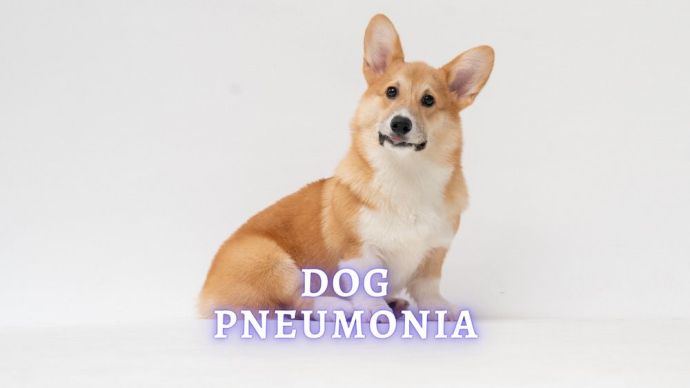 Dog Veterinary Tips Pneumonia in Dogs: Symptoms, Diagnosis, Treatment and Recovery (Vet Advice)
Dog Veterinary Tips Pneumonia in Dogs: Symptoms, Diagnosis, Treatment and Recovery (Vet Advice) - 343
- 0
 Dog Veterinary Tips Why is my Dog throwing up: Causes and Preventing (Veterinary Advice)
Dog Veterinary Tips Why is my Dog throwing up: Causes and Preventing (Veterinary Advice) - 21800
- 5
 Dog Care My Dog Keeps Scratching His Mouth: Reasons Why Your Dog Scratching Face
Dog Care My Dog Keeps Scratching His Mouth: Reasons Why Your Dog Scratching Face - 17168
- 1
 Dog Care Why Is My Dog Bleeding From Its Butt? Causes and treatment of rectal bleeding in the dog
Dog Care Why Is My Dog Bleeding From Its Butt? Causes and treatment of rectal bleeding in the dog - 15112
- 0









